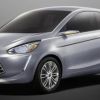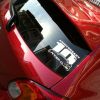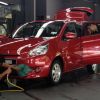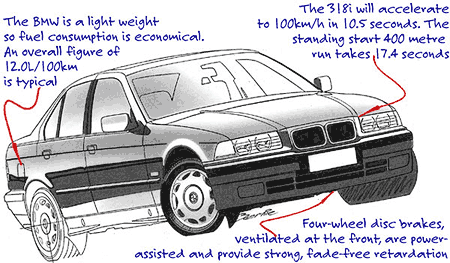Hi Flange - welcome to the forum!

Originally Posted by
Flange

so could it be that LRR tyres are actually a crock ? I wouldn't suggest that, but I have conclusively found that when run at the same pressures as LRR tyres, wider Kingstar directional radials don't sacrifice fuel economy on an Alto. I ran both the LRRs and the Kingstars at 40psi.
"LRR" is only a label, and the rolling resistance properties of various tires lie across a spectrum. So that Alto tire may have been labelled "LRR" but could conceivably have been at the low end of the scale in terms of rolling properties -- not much different from a non-LRR tire at the upper end of its spectrum.
Also, not sure about NZ, but they're still sorting out LRR labelling/evaluation/comparison issues here in North America, and at the moment, it's a bit of the wild west (in other words, not all "LRR" claims are made equal).
The effect of wider tires is well understood to adversely affect aerodynamics and decrease efficiency at higher speeds. Wider tires increase both drag coefficient and frontal area. By any chance does your Alto generally spend more time in the city or on the open road? EG: see
http://ecomodder.com/forum/showthrea...g-cd-7475.html
Last year, for kicks (I lead an exciting life), I compared various tires fitted to the same car. Rather than looking at fuel consumption, I directly compared each tire's "roll out distance" down a very small hill. Results were interesting. Here's an image that showed the "spread" from the worst to the best tire (in terms of rolling ability), all at the same pressure:

From:
http://ecomodder.com/forum/showthrea...e92-19126.html
---
Aside from all that ...Thanks for posting your experience!
And the big question: How are you liking the Mirage ??
If anybody has knowledge of the offset of the standard Mirage steel wheels I would love to know please. Likewise if anybody has actually fitted alloys to their Mirage, please let me know what they are.
Best results for getting a response to those questions is if you start a new thread with a descriptive title.
cheers!
Darin



 "Global Small" Concept
"Global Small" Concept Even Fancier Metro (Mirage #2)
Even Fancier Metro (Mirage #2) Fancy Metro (Mirage #1)
Fancy Metro (Mirage #1) Loaner #1 from Mitsubishi
Loaner #1 from Mitsubishi Loaner #2 from Mitsubishi
Loaner #2 from Mitsubishi Mirage #3: Appliance Car
Mirage #3: Appliance Car
 Reply With Quote
Reply With Quote Mirage
Mirage
 Pinky
Pinky

 MiMi
MiMi

